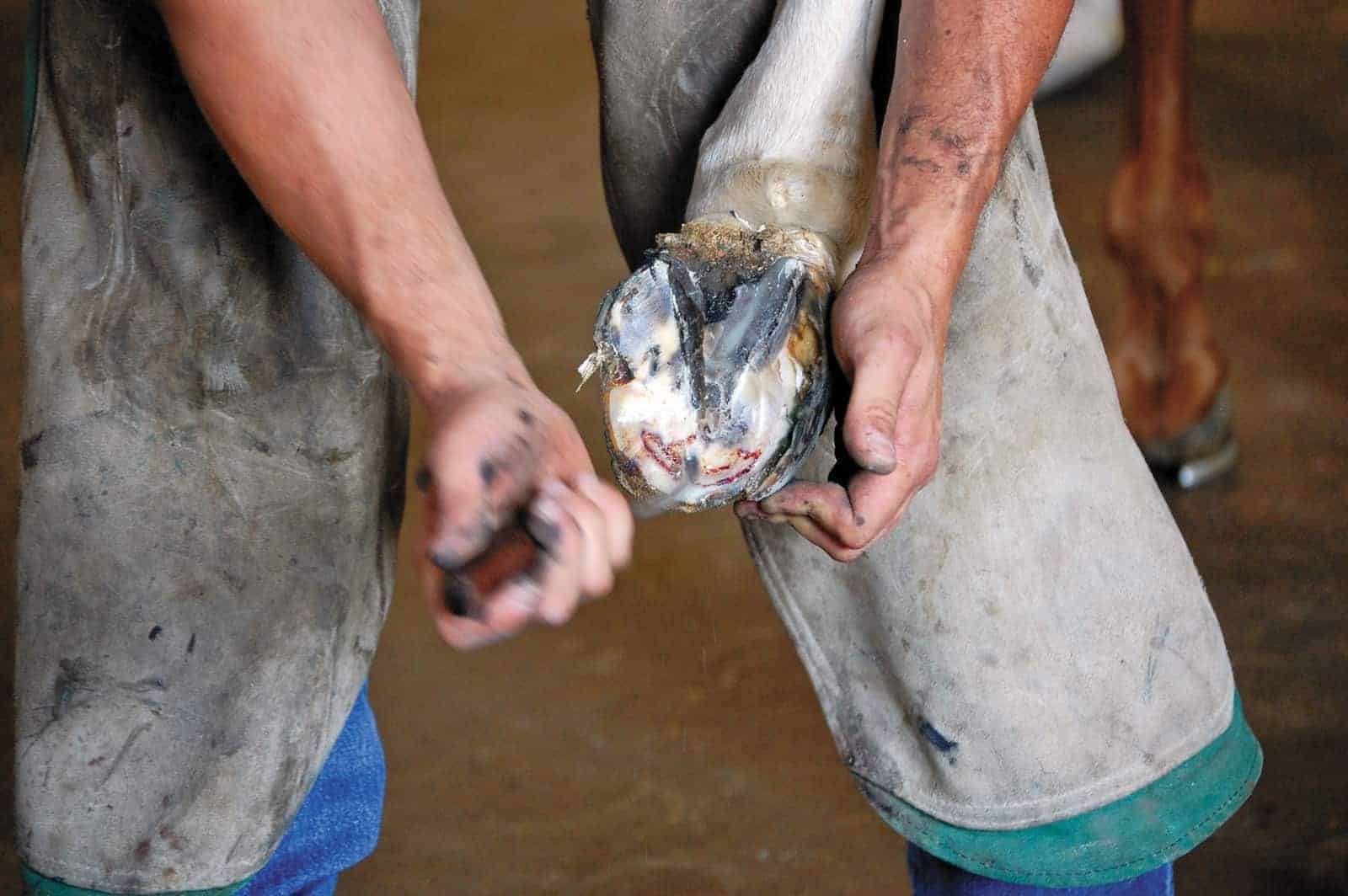Study: Horse Hoof Problem Prevalence High

Out of nearly 1,000 randomly chosen horses, 85% had at least one hoof disorder visible during a regular farrier visit, said Menno Holzhauer, PhD, of GD Animal Health in Deventer.
Farriers and researchers identified multiple hoof issues, including:
- Thrush (45.0%);
- Superficial hoof wall cracks (30.4%);
- Growth rings (26.3%);
- Sole bruises (24.7%);
- White line disease (17.8%);
- Perforating hoof wall cracks (16.4%)
- White line widening (11.8%);
- Horizontal hoof cracks (5.2%);
- Chronic laminitis (3.6%);
- Quarter cracks (2.7%);
- Keratoma (1.8%); and
- Frog canker (1.0%).
“This was really higher than expected, and it’s important to diagnose and treat these disorders at an early stage because they interfere with animal welfare and cause lost days of performance in these horses,” Holzhauer said. “Individual farms should compare the prevalence of hoof disorders in their farms with the general prevalence. And, they should learn about risk factors so as to reduce them, thereby striving for maximal soundness and comfort of these horses in relationship to the hoof disorders found
Create a free account with TheHorse.com to view this content.
TheHorse.com is home to thousands of free articles about horse health care. In order to access some of our exclusive free content, you must be signed into TheHorse.com.
Start your free account today!
Already have an account?
and continue reading.

Written by:
Christa Lesté-Lasserre, MA
Related Articles
Stay on top of the most recent Horse Health news with











